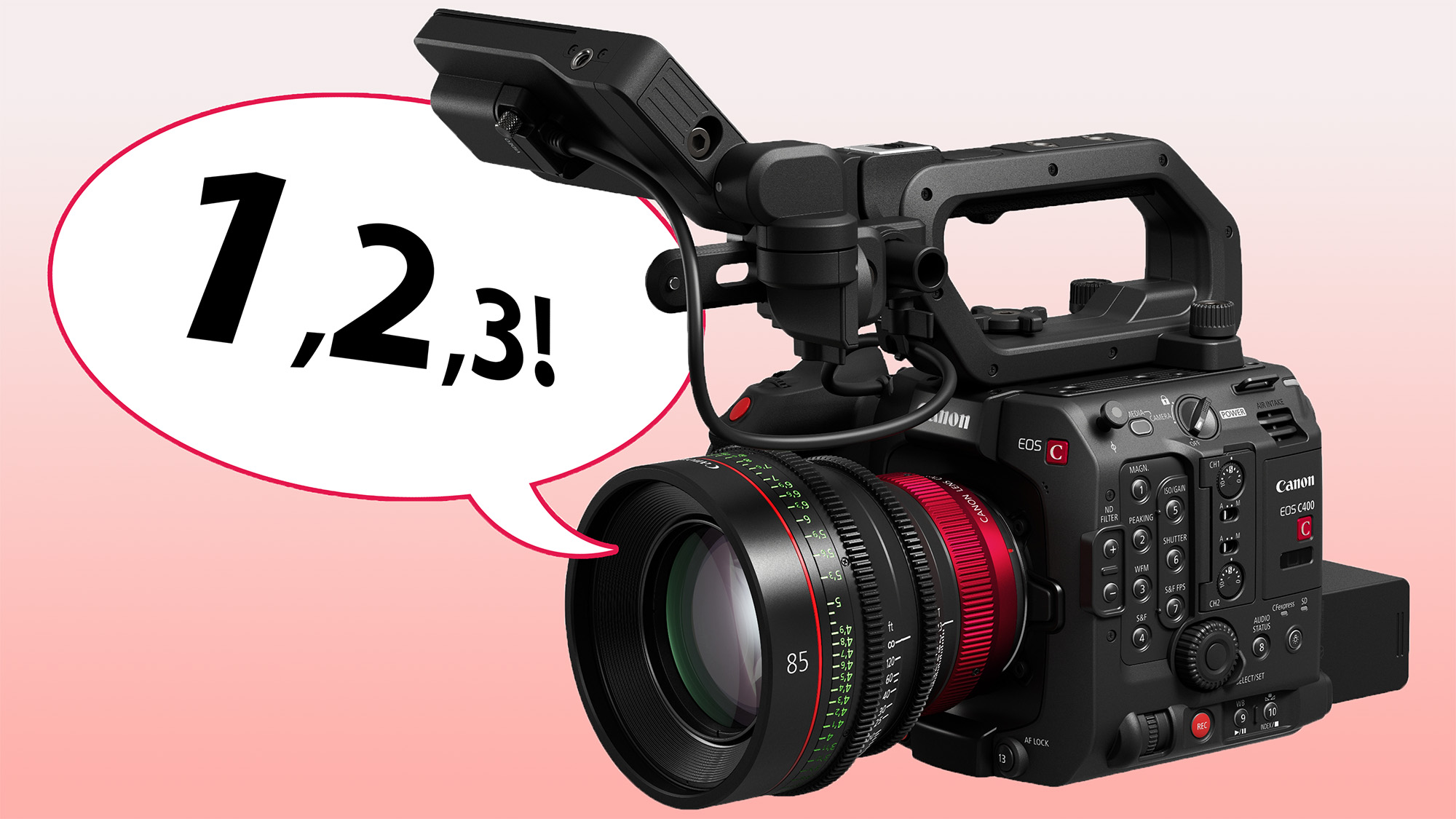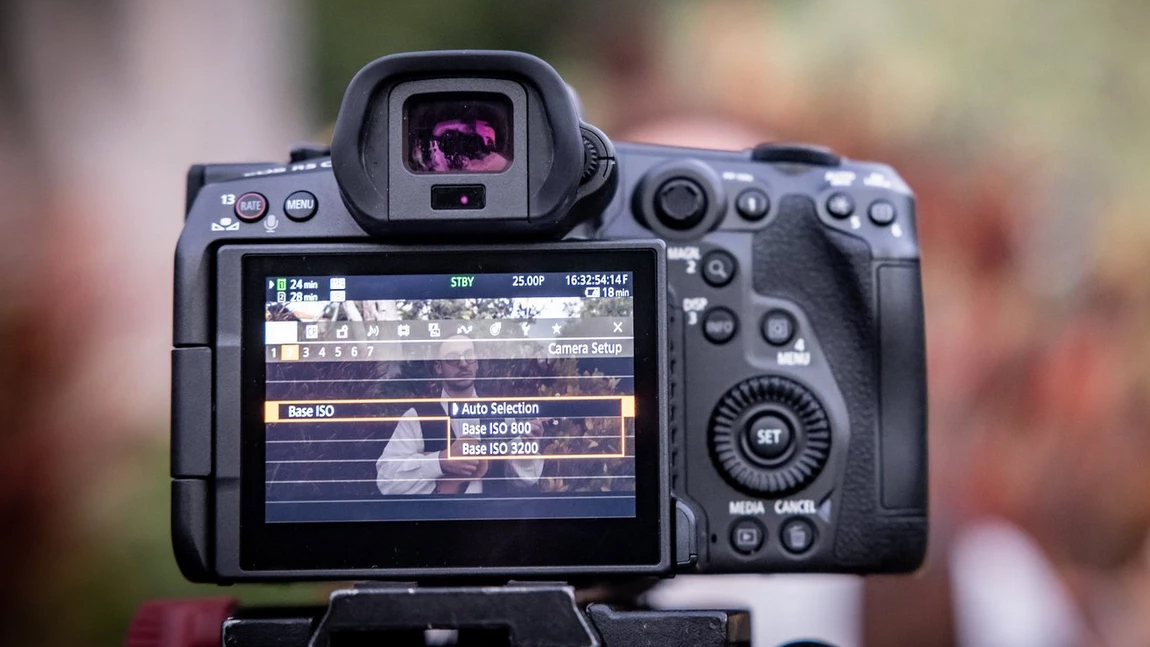What is triple-base ISO – and why should you care about it?
So, what is triple-base ISO – more camera marketing jargon, or a triple-jump into the imaging industry's future?

When Canon launched the Canon EOS C400 cinema camera, it introduced the world to triple-base ISO – a feat it repeated just months later by announcing the Canon EOS C80. But what is triple-base ISO and does it really matter?
Well, I'll cut to the chase and tell you that it's pretty darned impressive. But to understand triple-base ISO and why three really is the magic number, you need to understand what ISO does in the first place, what base ISO means, and how it differs from another often-used piece of photography jargon: native ISO.
So what is ISO in photography? Well, when a photographer cannot (or does not want to) widen their aperture or decrease their shutter speed to increase the flow of light, they turn to ISO. This exposure setting is used to boost the digital signal that's created when light hits the photosites on the camera's sensor.
Think about boosting the gain on an audio amplifier; the higher the gain, the more distortion. Similarly, boosting the gain of the digital signal created by a camera sensor's photosites introduces a form of visual distortion called noise.
This unsightly – luminous or black-and-white – grain becomes increasingly intrusive the more the ISO is boosted. But remember, all cameras aren't made equally. Some boast better image quality at higher ISOs than others.
Native and base ISO
One way to reduce the amount of noise in your images is to stick to your camera's native ISO values. Take the Nikon Z6 III, for example. This camera's extended ISO range is ISO 50-204,800, but its native ISO is only 100-64,000. Figures on either side of the native ISO range are extended.
This means that the signal from the photosites is no longer amplified (it will stay at the highest or lowest native ISO), instead the file itself is digitally darkened or brightened, causing significantly more noise.
Get the Digital Camera World Newsletter
The best camera deals, reviews, product advice, and unmissable photography news, direct to your inbox!
Base ISO is comparatively simple. It's the camera in question's lowest native ISO, and the ISO value that is not amplified. So, the Z6 III's base ISO is 100 (although ISO64 and 200 are common base ISO values, too). And yet, the advent of dual-base ISO and triple-base ISO has muddied the waters slightly.
Dual-base ISO

Bear with me on this one. Understanding dual-base ISO will make triple ISO much easier to understand. Dual-base ISO simply means that there are not one but two base ISOs: a low base ISO and a high base ISO. This has been adopted by a number of manufacturers. And while not every brand is equally as transparent when it comes to its process, the video from Panasonic (below) provides an excellent explanation of how this can work.
Essentially, whereas a conventional camera relies on one ISO analog circuit to provide its base ISO – with all other native ISOs relying on gain increases to brighten the image – Panasonic cameras with a dual-base ISO (like the Panasonic Lumix S5 II / S5 IIX) feature two analog circuits: one for the lower base ISO and one for the higher base ISO. And since these circuits exist before the signal is boosted, the higher base ISO can produce virtually noise-free imagery akin to the lower base ISO.
Triple-base ISO
Phew, we've finally made it to triple-base ISO! And since you now understand what dual ISO is, this really shouldn't be a difficult concept to grasp. Essentially, the clever folks at Canon have found a way to add what I can only presume is a third analog circuit – allowing for a third base ISO that preserves top-notch image quality.
But what makes the EOS C400 and C80 so impressive is that their third-tier base ISOs are very high. For example, the Sony FX9's dual-base ISOs are ISO800 and ISO4000. But the C400 and C80's triple-base ISOs are ISO800, ISO3200 and ISO12800. That's a heck of a high ISO to be getting clean results.
So, there you have it. Triple-base ISO means a camera has not one, not two, but three base ISOs, giving content creators three ISO settings in which they can expect supreme-quality, virtually noise-free imagery. Neato! Until somebody comes along with quadruple-base ISO, that is…
If you're interested in triple-base ISOs, you might also be interested in the best cameras for filmmaking or the best cine lenses.

Mike is Digital Camera World's How To Editor. He has over a decade of experience, writing for some of the biggest specialist publications including Digital Camera, Digital Photographer and PhotoPlus: The Canon Magazine. Prior to DCW, Mike was Deputy Editor of N-Photo: The Nikon Magazine and Production Editor at Wex Photo Video, where he sharpened his skills in both the stills and videography spheres. While he's an avid motorsport photographer, his skills extend to every genre of photography – making him one of Digital Camera World's top tutors for techniques on cameras, lenses, tripods, filters and other imaging equipment – as well as sharing his expertise on shooting everything from portraits and landscapes to abstracts and architecture to wildlife and, yes, fast things going around race tracks...

